All issues

Successor
Volume 41, Issue 7
Displaying 1-4 of 4 articles from this issue
- |<
- <
- 1
- >
- >|
-
Tomoyuki YOKOTA, Kazumori MINAMI1967 Volume 41 Issue 7 Pages 245-251
Published: October 20, 1967
Released on J-STAGE: November 25, 2011
JOURNAL FREE ACCESSPharyngoconjunctival fever (PCF) prevailed among children in some primary schools in Fukushima Prefecture in summer, 1965.
By means of virus isolation and serological tests, it was confirmed that outbreaks occurring in two primary schools were caused by PCF due to adenovirus type-3. It became clear in the further investigations that there were three more primary schools involved at that time in similar occasions. All children examined were categorized as follows: Children of the former two schools and of the latter three schools were categorized as ‘confirmed group’ and ‘unconfirmed group’ respectively. The both groups were categorized altogether as ‘epidemic group’. Children of some primary schools examined which had no experience of such occasions were categorized as ‘control group’.
Ten months after the epidemic, 611 serum specimens were collected from children of both epidemic group and control group. The specimens collected were examined quantitatively for neutralizing antibody (NA) against adenovirus type-3.
The following results were obtained:
1) Average frequency of NA positive cases tested at the serum dilution of 1: 4 among all the children examined was 58%, which was lower than reported figures on epidemics in Okayama and Tokyo.
2) In confirmed group, the NA positive rate was significantly higher in the then manifesting children than in the then non-manifesting ones. Such was the case in unconfirmed group too. Accordingly, it can be safe to say that the epidemic occurring in unconfirmed group was almost unmistakably a part of PCF epidemic due to adenovirus type-3.
3) The frequency of NA positive cases in epidemic group was proved to be slightly lower than that in control group, if not anything significant. Since it is an acceptable theory that those having the antibody can protect themselves from the infection, most of the patients are supposed to have been lacking it before they were exposed to the causative agent. Then, it is conceivable that the positive rate of NA in epidemic group in pre-epidemic phase must have been significantly lower than that in control group. In other words, low possessing rate of the antibody is supposed to be one of the most important factors to have made the disease prevail in that scale.View full abstractDownload PDF (979K) -
Akira YAMADA, Isao GOTO, Hiroshi ISHIDA, Naohiko UENO1967 Volume 41 Issue 7 Pages 252-255
Published: October 20, 1967
Released on J-STAGE: November 25, 2011
JOURNAL FREE ACCESSSerum samples obtained from healthy adults living in Kumamoto prefecture were studied for Japanese Encephalitis antibody by the plaque-reduction neutralization (NT) and hemagglutination-inhibition (HI) techniques using Nakayama and JaGAr # 01 strains as antigens.
Although the both tests were well correlated, NT was more sensitive in detecting the antibody. That. is, 17 out of HI negative sera turned out to be NT positive by using Nakayama strains, and 7 out of 49 HI negative sera also turned out to be NT positive by using JaGAr # 01 strains.
As it was expected, the NT antibody possessing rate increased as the age advanced. Over all NT positive rates for Nakayama and JaGAr.# 01 antigens were 55% and 57% respectively.View full abstractDownload PDF (534K) -
Tooru SUGANO, Fukuyo TASHIRO, Takao MATSUMOTO1967 Volume 41 Issue 7 Pages 256-267
Published: October 20, 1967
Released on J-STAGE: November 25, 2011
JOURNAL FREE ACCESSTwenty nine patients and 27 carriers in 1965, 22 patients and 29 carriers in 1966, totaling 107 in number, of bacillary dysentery were treated with nalidixic acid (NA). Some of them were treated with NA alone with unsatisfactory results. Then, others were tried with combinations of NA and other antibiotics, such as kanamycin (KM), methane-sulfonate colistin (CoM), taocin (TO), and erythromycin (EM).
The clinical data and some relevant laboratory data are summed up as follows:
1) Redischarge of causative bacilli was seen in 8 (33.3%) out of 24 persons with single use of NA. In one case out of the 8, the bacilli was proved to have had spontaneous NA-resistance before the treatment. Strains from 3 persons developed acquired-resistance to 400 mcg/ml NA concentration in the course of the treatment. There appeared little difference in clinical effects between 3 gr and 4 gr dailydose of NA within a 7 days-administration-period. These results should be looked upon as rather unfavorable.
2) Tried in combination with NA are CoM, KM, TO, and EM. NA and CoM in combined use are applied to 64 cases; bacillary redischarge occurred in 2 (3.1%), both of which were carriers. NA and KM were applied to 8 cases; bacillary redischarge occurred in one case who was also a carrier. Redischarged bacilli obtained from these three cases showed NA-sensitivity in-vitro. NA and TO, NA and EM were tried on 8 cases and 3 cases respectively; in none of them bacilli redischarge occurred. These results are considered to be almost satisfactory in the light of therapeutical criteria accepted in the antibiotic field at the present time.
3) No particularly mentionable side effects concerning NA therapy, single or combined, were encountered so far.
4) Sensitivity of NA-sensitive causative bacilli ranged from 3.12 to 6.25 mcg/ml NA concentration level in-vitro, regardless of whether they were sensitive or resistant to other usual antibiotics such as streptomycin, chloramphenicol, and tetracycline. No cross-resistance was seen between NA and above mentioned antibiotics.
5) In in-vitro experiments, no antagonism was proved between NA and CoM, KM, Oleandmycin or EM. In some cases, they were independent with each other, and in others, they were proved to be synergic in their anti-microbial activities.View full abstractDownload PDF (1326K) -
1967 Volume 41 Issue 7 Pages 292-293
Published: October 20, 1967
Released on J-STAGE: November 25, 2011
JOURNAL FREE ACCESSDownload PDF (238K)
- |<
- <
- 1
- >
- >|